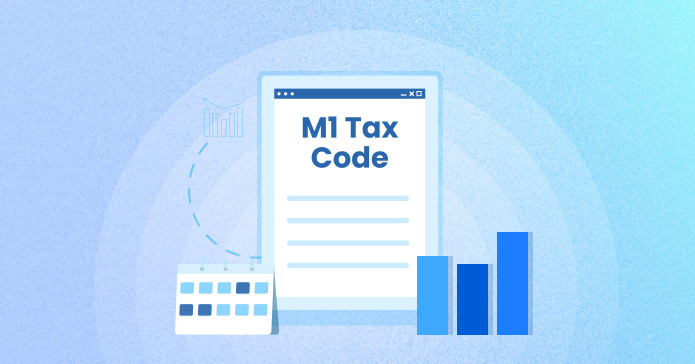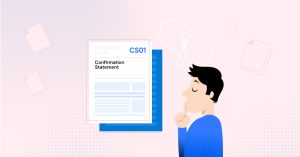EXPLAINED FOR SMALL BUSINESSES AND ENTREPRENEURS
Introduction
Navigating the realm of Tax Codes may sometimes come across as more difficult than deciphering hieroglyphs, especially for small business owners, freelancers, and individual taxpayers. One area that often confuses many is the M1 tax code.
Understanding what it is, when it's used, and how it impacts your finances is crucial for ensuring you're paying the right amount of tax. This blog post aims to demystify the M1 tax code, providing valuable insights and laying out practical tips tailored to your needs. By the end, you'll have a clearer grasp of this temporary tax code and know what steps to take if you find it applied to your earnings.
What is the M1 Tax Code?
The M1 tax code, also known as the "month 1" or "emergency" tax code, serves as a provisional code applied in specific situations. Essentially, it's a temporary measure used by HMRC until they can assign you the correct tax code. While the term "emergency" might sound alarming, the M1 tax code is designed to ensure that you still pay some tax except you`re likely to end up paying the wrong amount.
Why Would I Be on M1 Tax Code?
The M1 tax code generally comes into play in emergency scenarios or when there's insufficient information about your previous earnings and tax paid. This could happen
- if you start a new job without a P45 form,
- receive company benefits for the first time, or
- switch jobs frequently.
Essentially, HMRC uses the M1 code to prevent underpayment of taxes while they sort out your proper tax code.
How Does the M1 Tax Code Affect Your Income?
Being on an M1 tax code affects how much tax you pay each month. Instead of calculating your annual tax allowance, the M1 code only considers your monthly earnings. This can result in overpayment or underpayment of taxes during the period it's applied. For instance, if you have already used up your tax-free personal allowance in previous months, you may end up paying more tax than necessary.
The Tax Bands Under M1
Understanding the tax bands under the M1 tax code can help you better grasp its impact on your income. Here's a breakdown:
| Personal Allowance | Basic Rate | Higher Rate | Additional Rate |
| Amount for 1 month: £1,047.50 | Amount for 1 month: £3,141.67 | Amount for 1 month: £7,286.67 | Amount for 1 month: £18,524.16 |
| Rate of tax: 0% | Rate of tax: 20% | Rate of tax: 40% | Rate of tax: 45% |
How to Identify If You're on an M1 Tax Code
It's crucial to regularly review your payslips to identify if you're on an M1 tax code. Look for the "M1" or "W1" (week 1) notation next to your tax code. If you see this, it means you're on a temporary emergency tax code. Being proactive in identifying any discrepancies can save you from potential overpayments or underpayments.
How Do I Change My M1 Tax Code?
Changing your M1 tax code is essential for ensuring that you're paying the correct amount of tax. Follow these steps to facilitate the change:
- Gather Necessary Information: Collect all relevant documents, such as your P45,P60, or payslips, which will provide essential information about your previous earnings and tax paid.
- Contact HMRC: Reach out to HM Revenue and Customs (HMRC) either via their helpline or through your online personal tax account. Have your National Insurance number and any relevant details on hand to confirm your identity.
- Provide Details: Inform HMRC that you are currently on an M1 tax code. Explain your situation, including any changes in employment or circumstances that may have led to the temporary code.
- Submit Required Documents: If necessary, provide any requested documents to support your claim. This could include evidence of your previous income, tax records, or other pertinent information.
- Wait for Confirmation: After your request has been processed, HMRC will review your information and issue a new tax code. This may take some time, so be patient while they complete the necessary checks.
- Monitor Your Payslips: Once you receive your new tax code, closely monitor your payslips to ensure that the changes have been correctly applied. If you notice any discrepancies or delays, don't hesitate to reach out to HMRC again for clarification.
By following these steps, you can effectively change your M1 tax code and ensure you're not overpaying or underpaying your taxes.
What to Do If I Overpay Taxes
If you've been on an M1 tax code and discover that you've overpaid taxes, don't panic. HMRC will automatically review your tax situation at the end of the tax year and issue any refunds due. However, you can expedite the process by contacting HMRC and providing them with the necessary information to adjust your tax payments.
Conclusion
Understanding the M1 tax code and its implications is crucial for small business owners, freelancers, and individual taxpayers. By being proactive, keeping accurate records, and seeking professional assistance when needed, you can ensure that your tax code is accurate and avoid issues such as overpayment or underpayment. Remember, staying informed and taking action promptly can make all the difference in managing your tax situation effectively. If you need further assistance, don't hesitate to reach out to HMRC or consult with a tax advisor.













